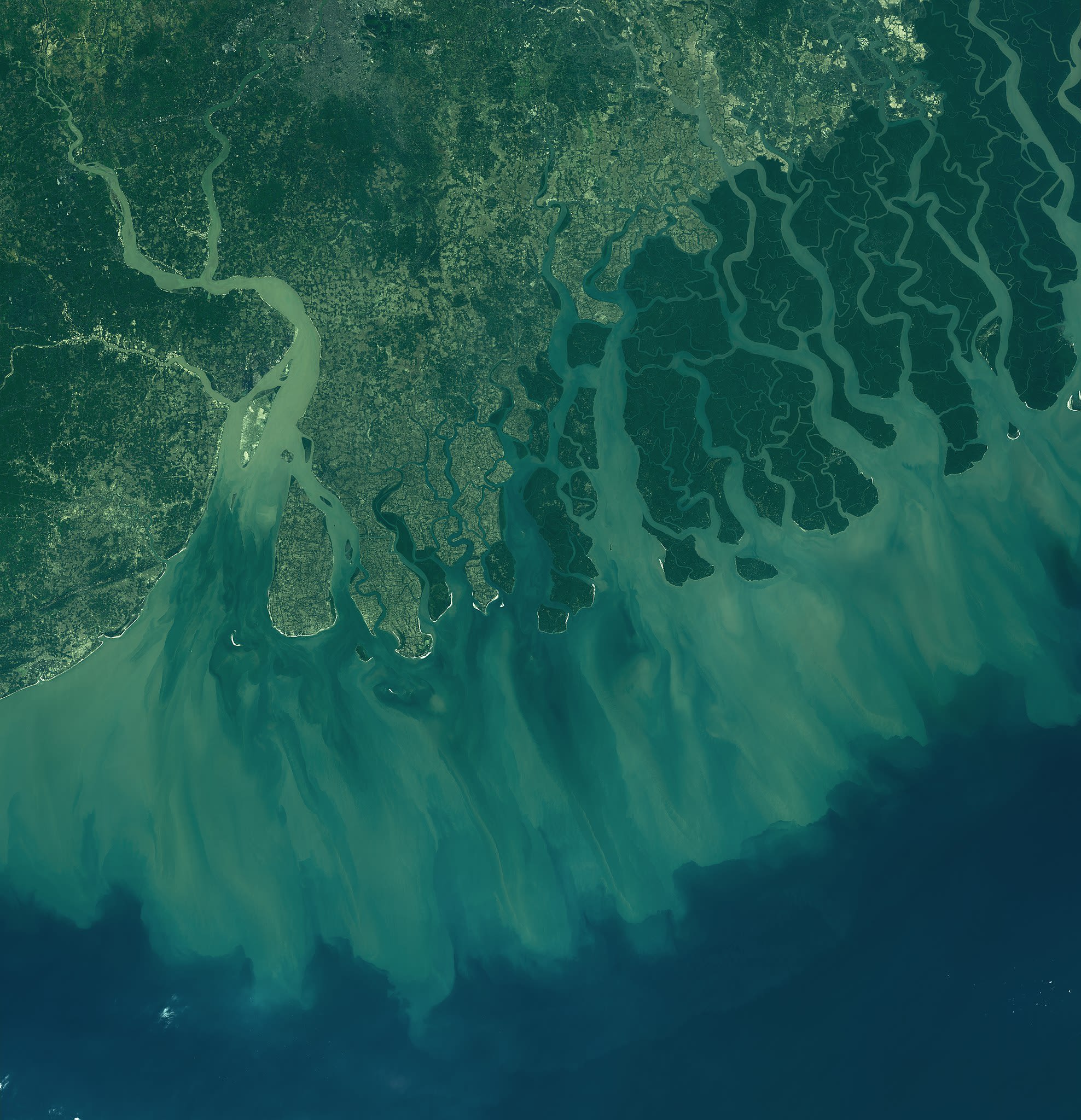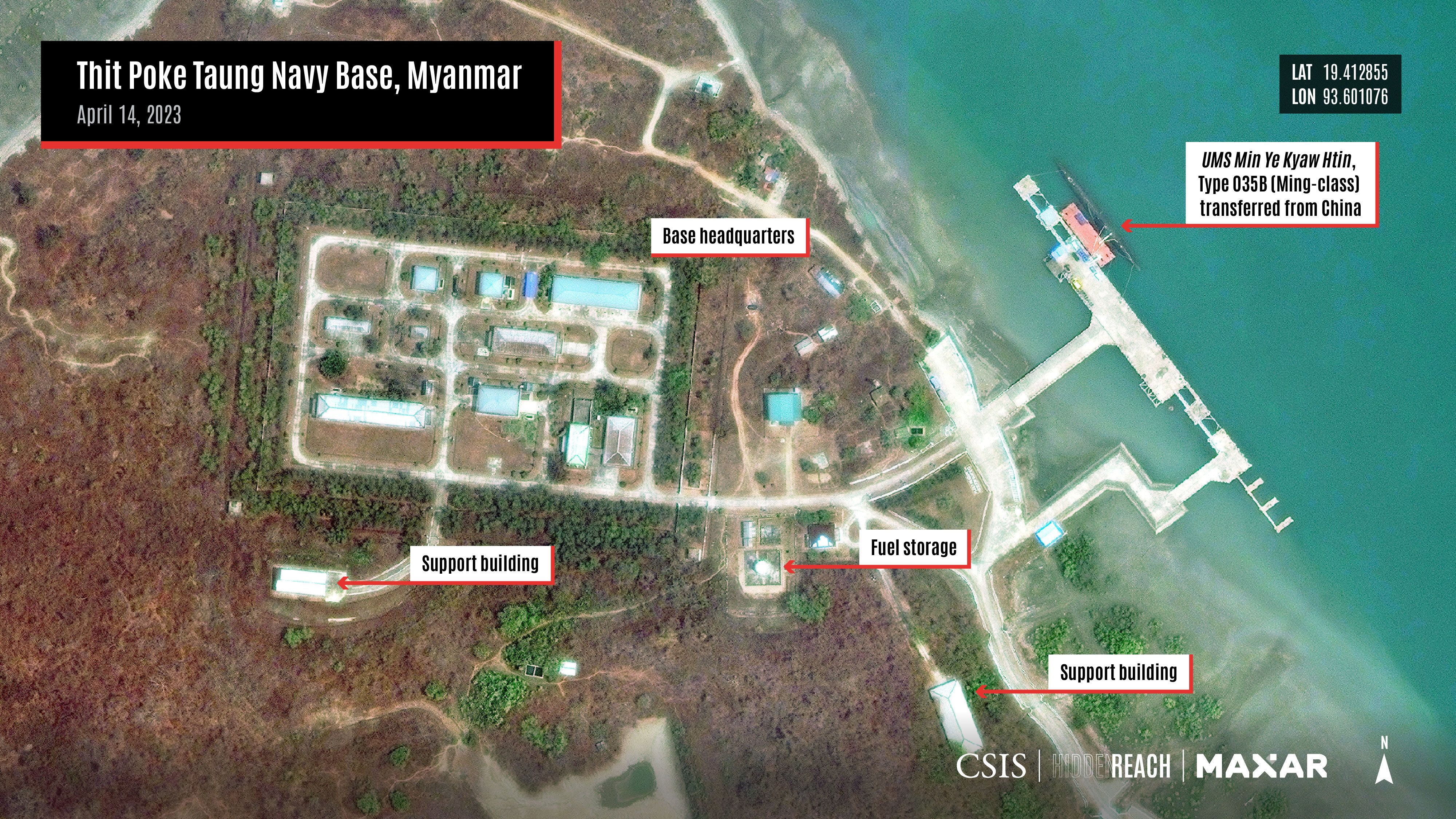Matthew P. Funaiole, Brian Hart, Aidan Powers-Riggs, and Jennifer Jun

China is quietly deepening its influence along the Bay of Bengal, a region intimately linked to Beijing’s expanding overseas interests. Commercial satellite imagery reveals that China has made significant progress on a naval base it is constructing for Bangladesh’s military. The base houses a pair of submarines that Dhaka received from Beijing two years before ground broke at the facility. China has likewise transferred a submarine to neighboring Myanmar to aid the embattled military regime.
Beijing’s efforts to strengthen ties with Bangladesh and Myanmar are taking place amid growing geopolitical competition with India. As smaller powers in the region seek to shore up their military capabilities, India and China are striving to become the security provider of choice.
Over the past decade, China has increasingly filled that role. Since 2010, more than two-thirds of Bangladesh’s arms imports, and nearly half of Myanmar’s, have come from China.
Military-to-military exchanges also support China’s strategic objectives. Closer defense ties may help the People’s Liberation Army (PLA) secure access to logistics facilities needed to sustain future naval operations in the region. The U.S. Department of Defense includes both Bangladesh and Myanmar on its short list of locations where Beijing has likely considered establishing overseas military facilities.
Gaining a foothold in the Bay of Bengal would significantly level up the PLA’s ability to operate farther from China’s own shores and create new challenges for India, as well as the United States and its allies.

Building Ties in Bangladesh
As a part of the Forces Goal 2030 initiative designed to modernize its military, Bangladesh ordered its first two submarines from China in 2013 for the bargain price of just $203 million. Both vessels are Type 035G diesel-electric attack submarines, a Ming-class variant first commissioned into the PLA Navy (PLAN) in 1990.
China refitted and upgraded the two vessels before handing them over to Bangladesh in 2016, but their capabilities remain far behind modern attack submarines fielded by today’s leading navies.
Just one year after handing over the vessels, the giant Chinese state-owned defense contractor Poly Technologies secured a $1.2 billion contract with Bangladesh to build a new submarine support facility on the country’s southeastern coast.
China’s ties to the base may go well beyond its construction. A senior Bangladeshi official acknowledged that Chinese personnel would also be involved in training Bangladesh’s submariners on how to operate the submarines and the new base, although few details have been shared publicly.
Additionally, in her remarks at the base’s opening, Prime Minister Hasina noted that the facility could be used as a service point for ships sailing in the Bay of Bengal—a potential signal that the PLAN may one day call at port there.
In contrast with the media fanfare normally associated with China’s overseas infrastructure projects, official outlets have been conspicuously silent on the base. These hushed tones may be intended to avoid antagonizing India, where there are mounting concerns over China’s role in developing the military capabilities of its neighbors. Beijing may also be seeking to avoid stoking additional unease among the United States and its allies.
For its part, Bangladesh has sought to balance its geopolitical relationships with both India and China. Even as it courts military support from China, the Bangladeshi military also conducts annual bilateral exercises with the Indian military, including most recently in October 2023. Nevertheless, as China endeavors to strengthen ties with Bangladesh, the PLAN may find it an increasingly receptive partner in the Bay of Bengal.

Making Waves in Myanmar
Further south along the bay’s coast, China appears to be pursuing a similar strategy in Myanmar. In 2021, it transferred a Type 035B (Ming-class) submarine to the Myanmar navy in a sign of support to the embattled military junta.
The deal was shrouded in secrecy, but China may have provided the submarine for free in a bid to outcompete India’s efforts to gain influence there. Just one year prior, India gifted Myanmar’s then democratically elected transitional government a Russian-built Kilo-class submarine.
Media reports revealed that in 2022 Myanmar’s military (the Tatmadaw) docked its new Chinese-built submarine at the Thit Poke Taung Navy Base, which is strategically positioned on a stretch of land jutting into the eastern coast of the Bay of Bengal. Satellite imagery from April 2023 provides a bird’s-eye view of the base, with the Chinese-made submarine clearly visible.

The facility lies just 10 kilometers north of Kyaukpyu Port, which is home to one of China’s marquee infrastructure projects in the region. China invested billions of dollars into building liquefied natural gas (LNG) and oil facilities and pipelines from Kyaukpyu Port to Yunnan Province in southern China.
The pipelines can reportedly carry some 12 billion cubic meters of gas and 22 million barrels of oil per year. These projects are aimed, in part, at reducing China’s dependence on the nearby Malacca Strait, a critical maritime chokepoint through which much of China’s energy imports flow.
Chinese state-owned firms CITIC and China Harbor Engineering Company are also seeking to develop a deepwater port and a special economic zone project at Kyaukpyu, in what Chinese state media have referred to as a “model project in China-Myanmar BRI [Belt and Road Initiative] cooperation.”
The $7.3 billion project is expected to begin construction after an ongoing environmental assessment is complete. Much like other projects developed through China’s favored "Port-Park-City Model" (or Shekou Model, 蛇口模式), the entire zone will be under CITIC control for 50 years.
Myanmar has long been sharply resistant to foreign interference in its domestic affairs. Yet the military regime’s increasing isolation and growing dependence on China for critical economic and political support has already magnified Beijing’s influence in Naypyidaw. As the PLAN extends its operations to safeguard China’s growing interests in the region, the Kyaukpyu Port or the nearby naval facility at Thit Poke Taung may prove to be attractive options to provide its vessels with logistical support.
No comments:
Post a Comment